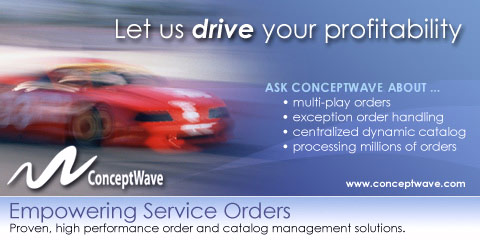
article page
| 1
| 2
| 3
| 4 |
out. I did listen to some of the podcasts about the show that iTunes put right in front of me. I found comfort in knowing that I’m not the only dork who loves Firefly and that, in fact, there are much bigger dorks than I who are far more obsessed with the show and whom I can count on to keep the Firefly content coming. (In fact, that’s how the business case for making the movie Serenity was built. I bought that too.).
The Wise Men Sayeth
Okay, so we all know that Amazon.com is much more fun to shop on than say AT&T.com (sorry AT&T, you’re just first in the alphabet). And we also know that Best Buy is fun because you can play with all kinds of cool toys even if you have no intention of buying anything. But the important question is, what hurdles are keeping CSPs from creating a compelling and continuous sales and buying experience? For answers to this question, I talked to Konczal. But I also reached out to my ace-in-the-hole. My secret mentor who’s a recently retired, C-level executive with a major communications provider who’s seen and done absolutely everything there is to do in this business.
He said, “The competitive advantage rests in a flexible and well aligned front-end.”
I responded, “What?”
He said, “The more products and the more complex they are, the more difficult it is to train people and give customers a personal experience… This business about complex
|
|
“The competitive advantage rests in a flexible and well aligned front-end.” |
|
- Simplify the process. Don’t just have it mimic the complexity in the background. “You have to reinforce simplification again and again and again and not just react to what a sales or marketing guy wants. It’s not just about optimizing how quickly a transaction works. How does it affect the customer?”
- Take ownership of the customer all the way through. “If you sell a disjointed product with different levels of service and maintenance, who owns the customer? It should be someone who cares about the customer over time…and stays with you until they finish the experience.”
- Establish trust in your brand. “I think it’s very difficult to maintain a good relationship with a customer when your brand doesn’t imply good customer service…Establish trust in your brand with messages that come through all channels the same way, whether it’s on the web, in a store, or in the contact center. Customer trust has to be established across them all.”
|
|
|
|

products, complex contracts, maintenance and replacement may or may not be included - that’s confusing, and when people are confused, they have a bad experience.”
So I asked him what a CSP can do about it. He offered three critical points.
|
|

Putting him to the test, I asked “If this is so straightforward, why aren’t CSPs doing it already?”
He gave me two good reasons. “In many cases,” he said, “there isn’t a long term plan
article page
| 1 | 2 | 3
| 4 | |
|





